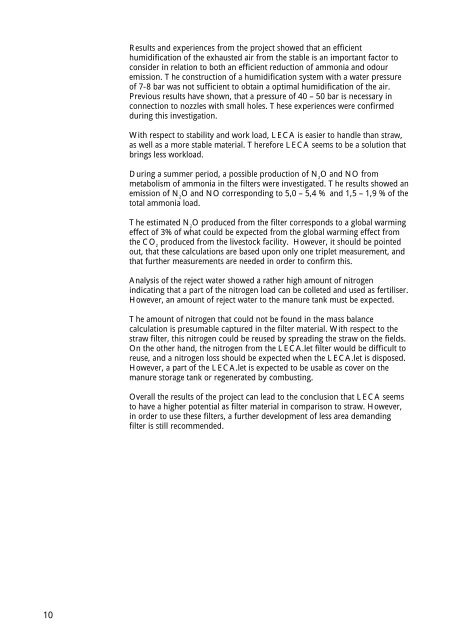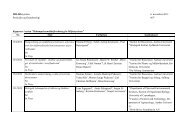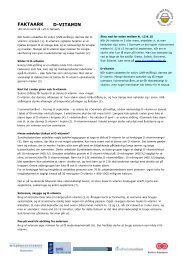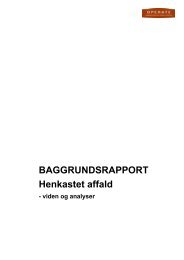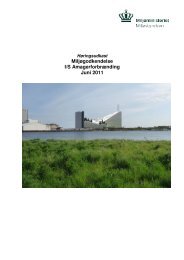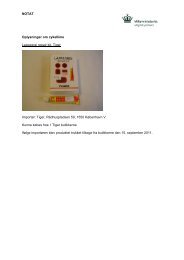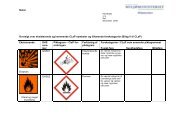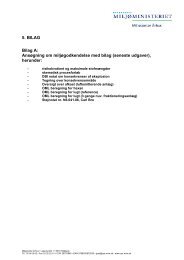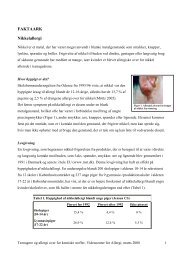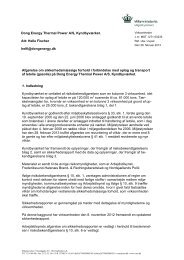Luftrensning til stalde. Videreudvikling af biofiltre til ... - Miljøstyrelsen
Luftrensning til stalde. Videreudvikling af biofiltre til ... - Miljøstyrelsen
Luftrensning til stalde. Videreudvikling af biofiltre til ... - Miljøstyrelsen
Create successful ePaper yourself
Turn your PDF publications into a flip-book with our unique Google optimized e-Paper software.
10<br />
Results and experiences from the project showed that an efficient<br />
humidification of the exhausted air from the stable is an important factor to<br />
consider in relation to both an efficient reduction of ammonia and odour<br />
emission. The construction of a humidification system with a water pressure<br />
of 7-8 bar was not sufficient to obtain a optimal humidification of the air.<br />
Previous results have shown, that a pressure of 40 – 50 bar is necessary in<br />
connection to nozzles with small holes. These experiences were confirmed<br />
during this investigation.<br />
With respect to stability and work load, LECA is easier to handle than straw,<br />
as well as a more stable material. Therefore LECA seems to be a solution that<br />
brings less workload.<br />
During a summer period, a possible production of N 2 O and NO from<br />
metabolism of ammonia in the filters were investigated. The results showed an<br />
emission of N 2 O and NO corresponding to 5,0 – 5,4 % and 1,5 – 1,9 % of the<br />
total ammonia load.<br />
The estimated N 2 O produced from the filter corresponds to a global warming<br />
effect of 3% of what could be expected from the global warming effect from<br />
the CO 2 produced from the livestock facility. However, it should be pointed<br />
out, that these calculations are based upon only one triplet measurement, and<br />
that further measurements are needed in order to confirm this.<br />
Analysis of the reject water showed a rather high amount of nitrogen<br />
indicating that a part of the nitrogen load can be colleted and used as fer<strong>til</strong>iser.<br />
However, an amount of reject water to the manure tank must be expected.<br />
The amount of nitrogen that could not be found in the mass balance<br />
calculation is presumable captured in the filter material. With respect to the<br />
straw filter, this nitrogen could be reused by spreading the straw on the fields.<br />
On the other hand, the nitrogen from the LECA.let filter would be difficult to<br />
reuse, and a nitrogen loss should be expected when the LECA.let is disposed.<br />
However, a part of the LECA.let is expected to be usable as cover on the<br />
manure storage tank or regenerated by combusting.<br />
Overall the results of the project can lead to the conclusion that LECA seems<br />
to have a higher potential as filter material in comparison to straw. However,<br />
in order to use these filters, a further development of less area demanding<br />
filter is s<strong>til</strong>l recommended.


